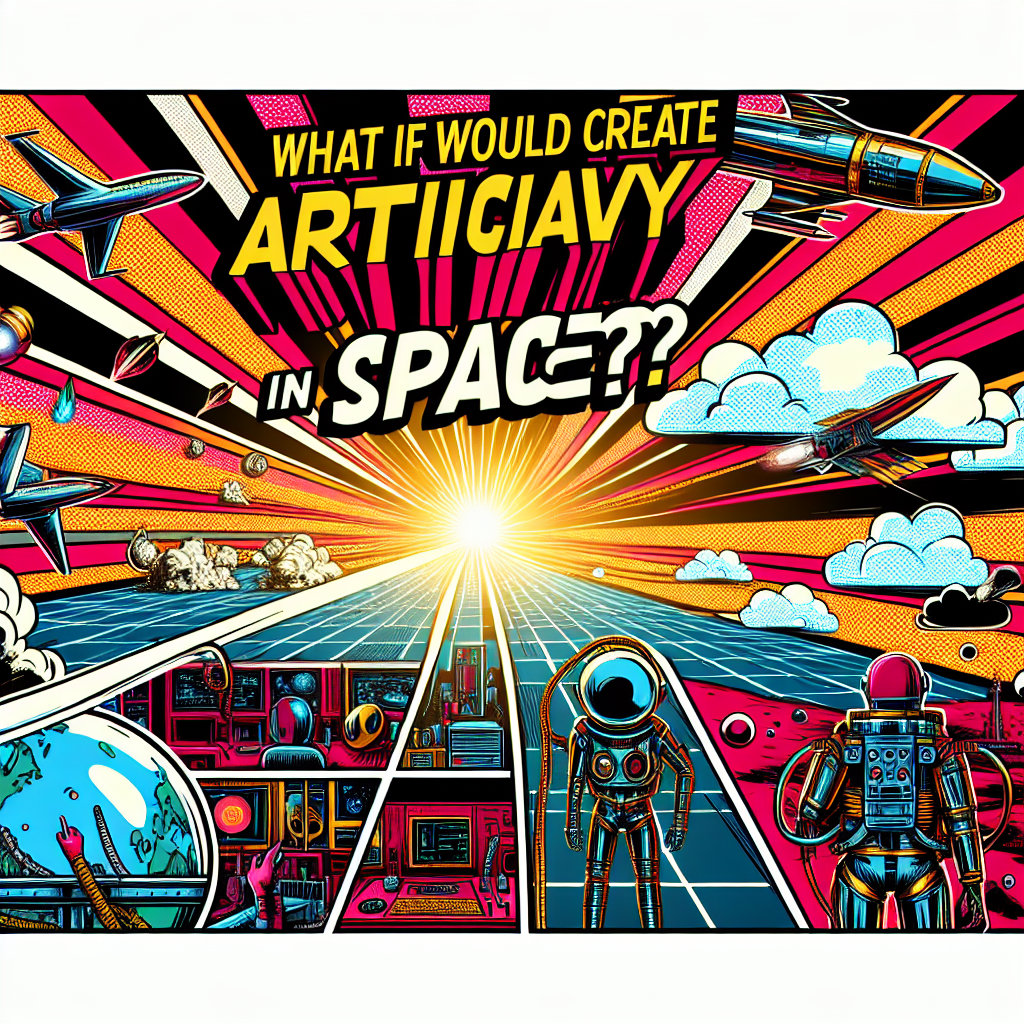Gravity is a force that warps the fabric of spacetime, and in the vastness of space, it's a force we can't take for granted. You see, on Earth, we're stuck to the ground because of the planet's mass and our own inertia. But in space, there's no massive object to provide that gravitational pull, leaving us floating around like feathers in the wind.
Imagine you're in a car, driving on a straight road. You're moving at a steady 60 miles per hour, and suddenly, the road takes a sharp turn. What happens? You feel a force pulling you into the turn, right? That's inertia, the tendency of an object to resist changes in its motion. In space, there's no air resistance, no friction, and no gravity to slow you down or pull you in any particular direction. You're free to float, spin, and twirl like a figure skater on ice.
Now, if we want to create artificial gravity in space, we need to mimic the effects of gravity on the human body. One way to do this is through rotation. Imagine you're on a merry-go-round, spinning around in a circle. As you spin, you feel a force pushing you outward, away from the center of the ride. That's centrifugal force, a consequence of inertia. In space, if we spin a spacecraft or a habitat fast enough, the centrifugal force can simulate gravity.
But here's the catch: the faster you spin, the stronger the artificial gravity. However, if you spin too fast, you'll get motion sickness, and that's not exactly what you want when you're living in space for extended periods. So, we need to find a sweet spot, a balance between gravity and comfort.
Another approach is to use acceleration. Think of it like a high-speed elevator, constantly accelerating upward. As you accelerate, you feel a force pushing you into your seat, similar to the force of gravity. In space, we can use rockets or engines to accelerate a spacecraft, creating artificial gravity through constant acceleration.
However, there's a problem: acceleration requires a lot of energy, and in space, energy is limited. We can't keep accelerating indefinitely, or we'll run out of fuel and be lost in space. So, we need to find ways to make acceleration more efficient, perhaps using advanced propulsion systems or clever mission planning.
Radiation is another issue we need to consider. Space is full of harmful radiation, and prolonged exposure can be deadly. Artificial gravity can help mitigate this problem by creating a safer environment for the astronauts. With artificial gravity, we can design habitats that provide better radiation shielding, protecting our space travelers from the harsh environment.
Let's explore another approach: using gravitational fields. Imagine you have two magnets, one with a north pole and the other with a south pole. When you bring them close, they attract each other, right? That's because of the magnetic field. Now, imagine creating a massive, spherical magnet in space, with a north pole on one side and a south pole on the other. If you place an astronaut inside, they'll experience a force similar to gravity, attracted to the center of the sphere.
But, here's the thing: creating such a massive magnetic field requires enormous amounts of energy, far more than we currently have available. And, even if we could generate such a field, the gravitational force would be very weak, much weaker than what we experience on Earth.
There's another concept that might seem like science fiction, but it's rooted in our current understanding of physics: gravitational manipulation using exotic matter. Imagine you have a special kind of matter that has negative energy density. If you place this matter in space, it would create a region with negative gravity, effectively repelling objects instead of attracting them.
Theoretically, if we could manipulate this exotic matter, we could create artificial gravity bubbles in space. It sounds far-fetched, but it's not entirely impossible. We've already seen evidence of exotic matter in certain astrophysical contexts, like black holes and neutron stars.
But, let's be realistic: creating artificial gravity in space is still largely in the realm of science fiction. We're decades, if not centuries, away from harnessing the technology to create a reliable, sustainable, and safe artificial gravity environment in space. It's a complex problem that requires significant advancements in materials science, propulsion systems, and our understanding of gravity itself.
Despite the challenges, the allure of artificial gravity in space is too great to ignore. It's a challenge that sparks the imagination, driving us to push the boundaries of human innovation and exploration. As we continue to venture into the unknown, we'll undoubtedly uncover new ways to simulate gravity, making space travel and habitation safer, more comfortable, and more accessible to humanity.
In the end, artificial gravity in space is not just a technical problem; it's a gateway to a new frontier, where humanity can thrive among the stars. The possibilities are endless, and the journey to get there will be nothing short of astronomical.

Popular Space Questions
Find answers to the trending space questions being asked by our community on social media.
- How many galaxies are there in the universe?
- How far is Pluto from Earth?
- How many planets are in the Milky Way?
- What are the planets in order?
- What would happen if a cosmic string passed through Earth?
- How many planets are in our solar system?
- How big is the universe?
- What would happen if a quasar aimed its jet at Earth?
- What would happen if a magnetar came close to Earth?
- What would happen if the sun exploded?